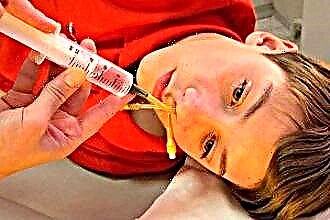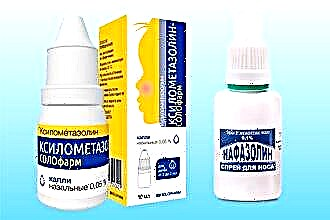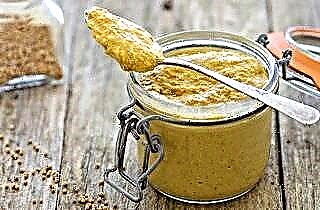Sinusitis is an inflammatory disease of the paranasal sinuses. Of all sinusitis, the most common is sinusitis - damage to the maxillary cavities. Given the location of the maxillary sinuses in close proximity to the most important organs in the human skull, pain in sinusitis can radiate to other parts of the head. Eyes, nose, ears, temples may hurt. Toothache with sinusitis is especially unpleasant.
Cause of toothache
 Pain with inflammation of the maxillary sinuses is one of the characteristic signs of the clinical picture of sinusitis (together with nasal congestion, fever, nasal voice). They can be localized in different places and indicate both the ailment itself and its complications. The mechanism of pain in sinusitis is as follows. At an early stage, soon after the onset of action of the pathogen, the cause of pain is directly the inflammatory process. With the further development of the disease, the mucous membrane swells and partially or completely overlaps the anastomosis of the accessory chambers, as a result of which the outflow of fluid deteriorates or stops altogether.
Pain with inflammation of the maxillary sinuses is one of the characteristic signs of the clinical picture of sinusitis (together with nasal congestion, fever, nasal voice). They can be localized in different places and indicate both the ailment itself and its complications. The mechanism of pain in sinusitis is as follows. At an early stage, soon after the onset of action of the pathogen, the cause of pain is directly the inflammatory process. With the further development of the disease, the mucous membrane swells and partially or completely overlaps the anastomosis of the accessory chambers, as a result of which the outflow of fluid deteriorates or stops altogether.
There is a stagnation of mucus, in which pathogenic bacteria develop, and pus is formed. The amount of exudate increases as it accumulates, the pressure on the sinus walls increases, the pain becomes more intense and widespread. A characteristic feature of sinusitis is an increase in pain in the upper jaw when the head is tilted forward, this makes it possible to differentiate it from other sinusitis, such as frontal sinusitis, ethmoiditis and sphenoiditis.
Very often there is a situation when teeth hurt with sinusitis. This is not surprising, given that the oral cavity and maxillary sinuses are located in the neighborhood, they are separated only by a thin septum. Often, due to the individual characteristics of the structure of the human skull, the roots of the upper teeth (apexes) protrude upward and actually end up inside the accessory chambers. This is typical for the chewing teeth, especially the sixth upper one. Accordingly, infection and pain can be easily transmitted between these organs. There are two mechanisms for the development of pain sensations:
- Ascending. In this case, the teeth are the initial source of damage, it is from them that the infection or inflammatory process rises in the sinuses. Depending on the localization of diseased teeth, sinusitis can be right-sided, left-sided or bilateral. At the same time, due to the back reaction from the maxillary pockets, pain in the affected tooth becomes much more intense, and healthy teeth also hurt.
- Descending. The primary focus of infection in this development of events is the maxillary sinus. Such situations are diagnosed much more often, they are more typical and predictable: the exudate flows into the lower part of the cavities, which are anatomically located below the roots of the teeth of the upper jaw.
Differentiate the reasons for the development of unpleasant sensations by time intervals. If at first a tooth ached, and then symptoms of sinusitis appeared, then the process is most likely ascending. If the initial sign was congestion, runny nose and fever, then there is a descending process.
If your teeth hurt with sinusitis, this can also be one of the echoes of headaches that can change their localization depending on external factors, incl. climatic.
So, experts recorded that when leaving a warm room in the cold in winter, patients noted a change in the location of pain and its concentration in the teeth, mainly in the maxillary.
Methods of pain relief for teeth with sinusitis
Sinusitis is characterized by complex clinical symptoms, so it is necessary to take measures to improve the patient's condition. That is, it is necessary not only to stop unpleasant sensations, but also to take measures to improve the general condition of the patient. Accordingly, there are three types of therapy: etiological, symptomatic and prophylactic.
- Etiological therapy involves the sanitation of the affected organ to eliminate the cause of the disease. Most often, it is carried out with the help of pharmacological drugs used by the parenteral and oral route. Sinusitis gives a positive response to the use of anti-inflammatory nonsteroidal drugs (ibuprofen, diclofenac, aspirin). Also, good results are shown by rinsing the nose using special devices (for example, the Yamik sinus catheter). If conservative therapy does not help, then otolaryngologists use surgical intervention - a puncture (puncture) of the maxillary sinus. In this case, purulent stagnant exudate is evacuated forcibly, the chamber is washed, and antibiotics are injected inside. Improvement of the general clinical picture due to the above actions weakens or completely relieves pain.
 Symptomatic therapy in this case consists in the removal of dental pain syndrome. The most effective method today is to take strong analgesics in the form of powders or crushed tablets. The most common drugs for this are tempalgin, analgin, aspirin, paracetamol and ibuprofen at elevated temperatures, ketans with severe pain syndrome. In addition, their solutions with the addition of salt are used, which are applied as lotions when pain intensifies. These funds are used once, however, if necessary, they can be repeated up to 3-4 times a day. If the patient is afraid of possible side effects when taking chemical pharmacological drugs, he can use herbal medicine, which relies on the therapeutic effects of natural components.
Symptomatic therapy in this case consists in the removal of dental pain syndrome. The most effective method today is to take strong analgesics in the form of powders or crushed tablets. The most common drugs for this are tempalgin, analgin, aspirin, paracetamol and ibuprofen at elevated temperatures, ketans with severe pain syndrome. In addition, their solutions with the addition of salt are used, which are applied as lotions when pain intensifies. These funds are used once, however, if necessary, they can be repeated up to 3-4 times a day. If the patient is afraid of possible side effects when taking chemical pharmacological drugs, he can use herbal medicine, which relies on the therapeutic effects of natural components.- Preventive therapy provides for the prevention of the onset of the disease and includes a number of measures aimed at regular care of the oral and nasal cavities, timely treatment of respiratory diseases, increased immunity through physical activity, good nutrition and the adoption of vitamin and mineral complexes.
Rinsing the nose as a way to relieve the patient's condition
The essence of rinsing the nose is to ensure drainage of the clogged cavity and eliminate the focus of the inflammatory process.
Such manipulations help to reduce the manifestation of unpleasant symptoms.
To achieve these goals, several methods are used:
- Flow-through rinsing. A standard procedure available for home use using a variety of solutions (herbal or medicinal products). To carry out the manipulation, a special teapot, a small syringe or an ordinary syringe without a needle is required. The patient over the bathtub or bowl tilts his head slightly to one side. A syringe tip is inserted into the previously blown out nostril, a solution is supplied under a slight pressure, which should flow out of the other nostril. Then the head is tilted to the other side and the procedure is repeated. Blow your nose thoroughly after rinsing. Within an hour after the manipulation, it is advisable not to leave the house in order to avoid colds.
 "Cuckoo". It is carried out in medical institutions in parallel with drug therapy. First, the patient takes vasoconstrictor drugs. Then the doctor who is lying on the patient's back carefully inserts an aspirator-suction into the nostril, due to which a negative pressure is created in the nasal cavity, which leads to an acceleration of the circulation of fluids in the accessory pockets.After that, the doctor inserts a syringe without a needle into the other nasal passage and fills the sinus with saline solution with drugs. In order for the liquid to get to its destination, the patient pronounces the word "cuckoo", while blocking the pharynx. The removed mixture exits through the other nostril.
"Cuckoo". It is carried out in medical institutions in parallel with drug therapy. First, the patient takes vasoconstrictor drugs. Then the doctor who is lying on the patient's back carefully inserts an aspirator-suction into the nostril, due to which a negative pressure is created in the nasal cavity, which leads to an acceleration of the circulation of fluids in the accessory pockets.After that, the doctor inserts a syringe without a needle into the other nasal passage and fills the sinus with saline solution with drugs. In order for the liquid to get to its destination, the patient pronounces the word "cuckoo", while blocking the pharynx. The removed mixture exits through the other nostril.- Sinus catheter Yamik. This is a device thanks to which the patient can avoid puncturing the sinus wall. The catheter is made of soft latex material, which will allow it to be used by children from 5 years of age and pregnant women. The main components of the device: a body (a rear balloon on a flexible metal tube and a valve for inflation) and a cuff (a front balloon with a valve and a nozzle for connecting a syringe). The best porn on Lenkino.porn is the best porn. Only the best porn. The patient, who is sitting on a chair, undergoes local anesthesia with lidocaine or novocaine. The posterior balloon is then inserted into the nasopharynx and inflated, overlapping it. The anterior balloon is inflated in the initial part of the nasal cavity, after which air is aspirated with a syringe without a needle. The vacuum created inside opens the anastomosis, and pus goes out into the nasal passage and further into the syringe.
Both of the above methods are highly effective and have a low incidence of side effects. After washing, the painful sensations disappear or weaken until a possible new accumulation of exudate in the chambers.
Folk remedies for toothache with sinusitis
In traditional medicine, there are many recipes for relieving toothache that have different effectiveness. Here are some of them:
- A water-salt solution is used to rinse the mouth. Half a teaspoon of baking soda and salt are diluted in a glass of warm water. The procedure is repeated several times a day.
- Rinsing the mouth with tinctures of various herbal preparations (oak bark, calendula, chamomile) is very popular due to the absence of contraindications for most patients.
- The use of simple medications that do not require a prescription. Most often, this method is resorted to to improve the patient's condition before going to the doctor. Rinsing with a solution of furacilin or chlorhexidine will relieve pain for a while, which will make it possible to get to the nearest medical facility.

 Symptomatic therapy in this case consists in the removal of dental pain syndrome. The most effective method today is to take strong analgesics in the form of powders or crushed tablets. The most common drugs for this are tempalgin, analgin, aspirin, paracetamol and ibuprofen at elevated temperatures, ketans with severe pain syndrome. In addition, their solutions with the addition of salt are used, which are applied as lotions when pain intensifies. These funds are used once, however, if necessary, they can be repeated up to 3-4 times a day. If the patient is afraid of possible side effects when taking chemical pharmacological drugs, he can use herbal medicine, which relies on the therapeutic effects of natural components.
Symptomatic therapy in this case consists in the removal of dental pain syndrome. The most effective method today is to take strong analgesics in the form of powders or crushed tablets. The most common drugs for this are tempalgin, analgin, aspirin, paracetamol and ibuprofen at elevated temperatures, ketans with severe pain syndrome. In addition, their solutions with the addition of salt are used, which are applied as lotions when pain intensifies. These funds are used once, however, if necessary, they can be repeated up to 3-4 times a day. If the patient is afraid of possible side effects when taking chemical pharmacological drugs, he can use herbal medicine, which relies on the therapeutic effects of natural components. "Cuckoo". It is carried out in medical institutions in parallel with drug therapy. First, the patient takes vasoconstrictor drugs. Then the doctor who is lying on the patient's back carefully inserts an aspirator-suction into the nostril, due to which a negative pressure is created in the nasal cavity, which leads to an acceleration of the circulation of fluids in the accessory pockets.After that, the doctor inserts a syringe without a needle into the other nasal passage and fills the sinus with saline solution with drugs. In order for the liquid to get to its destination, the patient pronounces the word "cuckoo", while blocking the pharynx. The removed mixture exits through the other nostril.
"Cuckoo". It is carried out in medical institutions in parallel with drug therapy. First, the patient takes vasoconstrictor drugs. Then the doctor who is lying on the patient's back carefully inserts an aspirator-suction into the nostril, due to which a negative pressure is created in the nasal cavity, which leads to an acceleration of the circulation of fluids in the accessory pockets.After that, the doctor inserts a syringe without a needle into the other nasal passage and fills the sinus with saline solution with drugs. In order for the liquid to get to its destination, the patient pronounces the word "cuckoo", while blocking the pharynx. The removed mixture exits through the other nostril.

